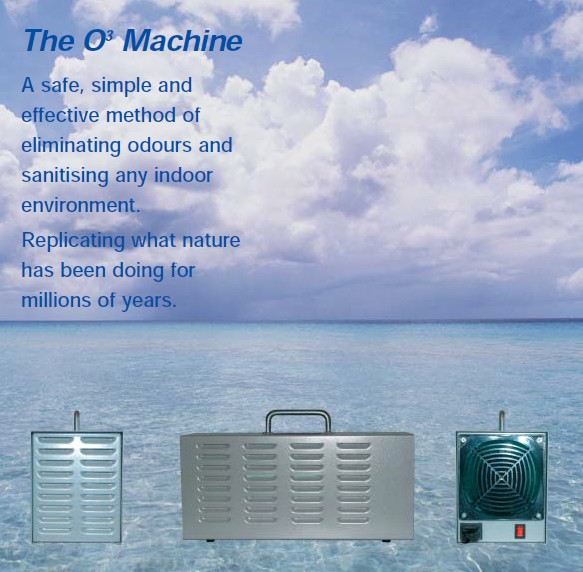The Problem
Odours are caused by airborne molecules given off by bacteria, moulds, spores, toxins, hydrocarbons, yeast, viruses and mildew.
Most traditional odour removal methods utilise perfumes or fragrances to simply mask the odour with another odour.
Some chemicals(oxidisers) such as chlorine or hydrogen peroxide can actually destroy odours, however they are difficult to
use and may bleach almost everything they touch.
The solution
Ozone is O3 or enriched oxygen. An oxygen molecule with 3 atoms instead of 2, like the oxygen we breathe.
Ozone is a highly efficient purification agent, stronger than chlorine or even hydrogen peroxide.
The method
Ozone destroys odours by releasing oxygen atoms to the odour substance. In other words, it undergoes a structural change resulting in a different substance.
It destroys the odour causing substances creating a harmless by-product.
Ozone converts back to oxygen when it oxidises a substance, e.g. O3 ozone loses 1 atom to an odourous substance which gains 1 oxygen atom and becomes oxidised, leaving the O3 as O2, or pure oxygen.
The odour is then eliminated. All you are left with is pure, fresh, really healthy air, it’s the most natural air freshener in the world.
How it works
An oxygen molecule consists of 2 oxygen atoms. Upon entering the generator these atoms are subjected to a light wave of electrically excited krypton gas that simulates the UV frequency from the sun, this causes the O2 atoms to split and O3 ozone is formed.
The weakly held active third atom attaches to and reacts with organic molecules by oxidation.
Destroys odours associated with:
• Bacteria
• Viruses
• Mould
• Algae
• Yeast
• Fungus
• Mildew
• Smoke
• Pollen
• Toxins
• Spores
• Urine
• Faeces
• Decaying matter
• Ketones from insulation, carpets and furniture
• V.O.C. (volatile organic compounds)
• O.D.S (ozone depleting substances)
Numerous applications:
• air conditioning systems
• clubs and pubs
• cold rooms
• greenhouses
• food packaging
• fruit & vegetable storage
• fire & water restoration
• duct cleaning
• hotel/motel rooms
• car detailing
• hair dressing salons
• garbage compactors
• commercial kitchens
• restaurants
• supermarkets
• freight containers
• hospital wards
• theatres
• carpet cleaning
• dry cleaning
• paint fumes
• smoking rooms
• wash rooms
• conference rooms
• doctors waiting rooms
• florists
• gyms & changing rooms
• ambulance /police vans
• garbage areas
• veterinary clinics
• pig/poultry farms
• nursing homes


